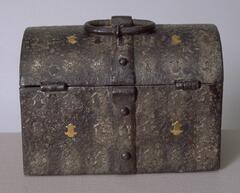18 UMMA Objects
18 UMMA Objects
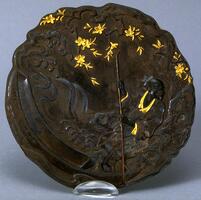
Japanese (Japanese (culture or style))
Mirror or relief plaque with scene of Taigong Wang fishing
18th century
Transfer from the College of Architecture and Design
1972/2.102

Japanese (Japanese (culture or style))
Tsuba (sword guard) with design of Kanzan (Chinese, Han Shan) and Jittoku (Chinese, Shihde), two Zen eccentrics
1700 – 1732
Gift of Mr. and Mrs. Robert T. Weston
1978/2.5

Japanese (Japanese (culture or style))
Tsuba (sword guard) with iris design
1775 – 1785
Gift of Mr. and Mrs. Robert T. Weston
1978/2.8

Japanese (Japanese (culture or style))
Incense burner with openwork lid
19th century
Transfer from the School of Art and the College of Architecture and Urban Planning.
1997/1.233A&B
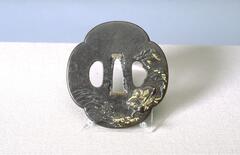
Harunori
Tsuba (sword guard) with inlaid design of samurai on horseback at the shore
18th century
Gift of Mr. and Mrs. Robert T. Weston
1978/2.2
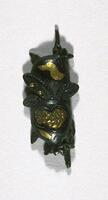
Japanese (Japanese (culture or style))
Sword Scabbard Ornament (Menuki)
19th century
Gift of Professor Rose Vainstein
1982/2.12

Japanese (Japanese (culture or style))
Flat Vase with Gilt Top and Inlaid Phoenix and Butterflies
19th century
Transfer from the School of Art and the College of Architecture and Urban Planning.
1997/1.194

Japanese (Japanese (culture or style))
Tsuba (sword guard) with design of Kanzan (Chinese, Han Shan) and Jittoku (Chinese, Shihde), two Zen eccentrics
1615 – 1868
Gift of Mr. and Mrs. Robert T. Weston
1978/2.9

Okada Masatoyo
Tsuba (Sword guard) with design of dragon among clouds
19th century
Gift of Mr. and Mrs. Robert T. Weston
1978/2.6
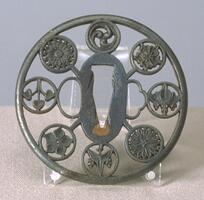
Japanese (Japanese (culture or style))
Tsuba (sword guard) with eight family crests
19th century
Gift of Mr. and Mrs. Robert T. Weston
1978/2.7

Japanese (Japanese (culture or style))
Sword scabbard ornament (menuki) in the shape of a lobster, pair with 1982/2.15
19th century
Gift of Professor Rose Vainstein
1982/2.14
Loading…
